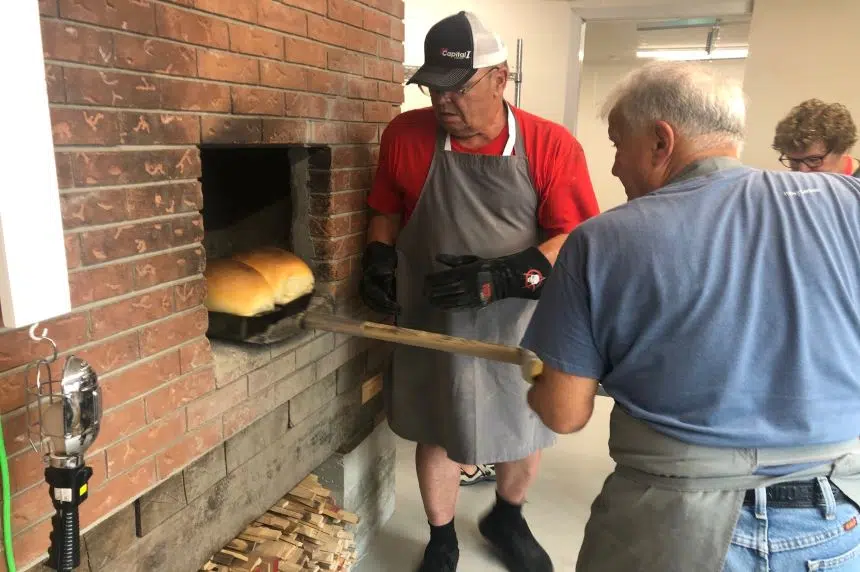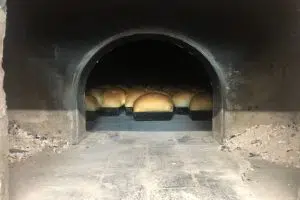It has been a staple at the Saskatoon Ex for decades: Fresh, clay-oven-baked Doukhobor bread.
After more than 50 years in the same spot, the Saskatoon Doukhobor Society’s three traditional clay ovens were moved by crane earlier this summer from their original location into a new building just east of the log cabin, which is also now home to the new Saskatoon Ex Museum.
Society member Dorothy Ozeroff says their new building is “a palace.”
“It’s beautiful — beautiful,” she said. “It’s got lots of space for us. We have room to move. It’s wonderful. We really have to thank Prairieland (Park.)”
The new building has a special room for the three ovens, which Ozeroff says can bake up to 100 loaves at a time.
The ovens are heated with hardwood and fire. Once the hardwood turns to ashes and comes to the correct temperature, it’s set aside so the pans with proofed dough can be placed into the ovens. It takes about an hour for them to bake to a golden brown.
One hundred pounds of flour go into a giant mixer, along with seven gallons of water and yeast. The dough is mixed, then cut and shaped by hand into loaves and set aside in pans to rise for about half an hour.
The society sells on average 600 loaves per day.
“We sell slices with jam and butter or just plain. So between slices and loaves, it’s about 600,” she said.
The recipe has been passed down through several generations, but Ozeroff says it’s the ovens that make their loaves taste different.
“It takes the moisture out of them. It doesn’t have that gluey taste like (bread) out of an ordinary oven does. The clay ovens make the difference,” she added.
Each loaf goes for $14, and a slice costs $6. Each loaf weighs about 2.25 pounds.
“This is our major fundraiser,” said Ozeroff. “It keeps our (Saskatoon) prayer home operations going.”
Every day, there are three people working the ovens, four in the kitchen and five to seven in the serving slicing area. Dozens of volunteers help over the week, including students who want to learn how to make bread from scratch.
Ozeroff says it’s also a way to preserve their traditions and culture.
The term “Doukhobor” means “Spirit Wrestler.” About 8,000 Doukhobors originally came to Canada from Russia in 1899 with the help of author Leo Tolstoy after suffering religious persecution. Many made their homes in Saskatchewan, and in B.C.’s Kootenay region.












